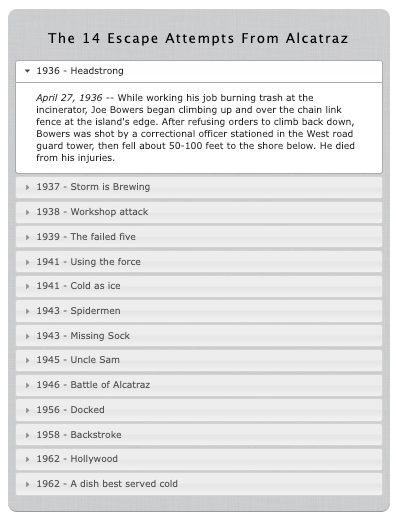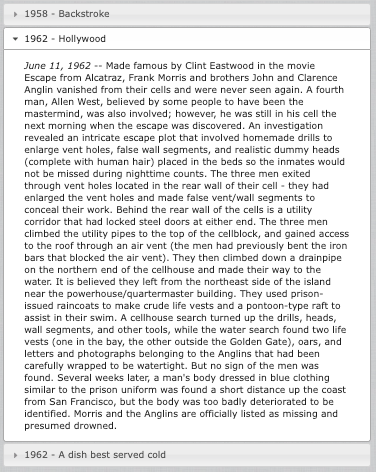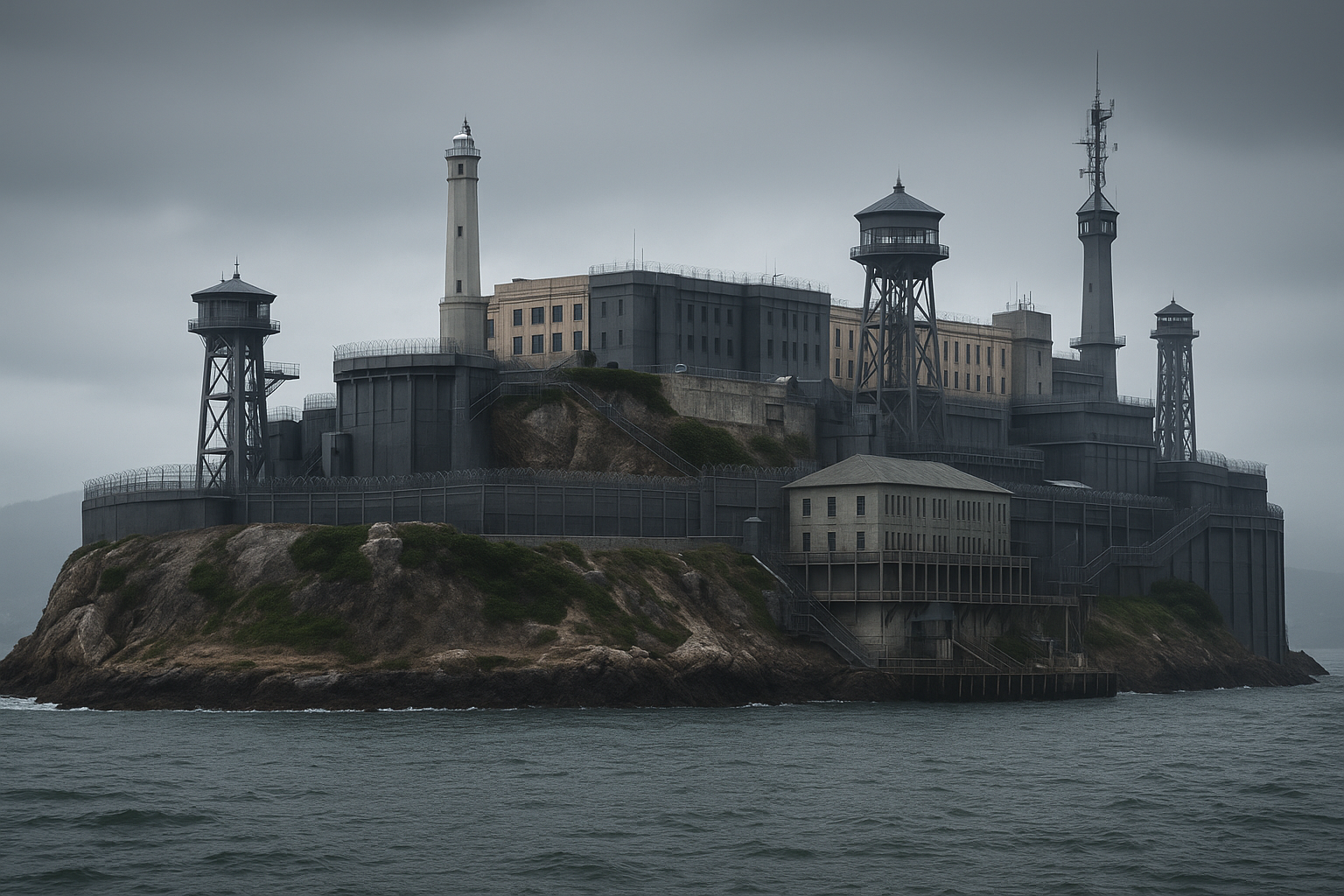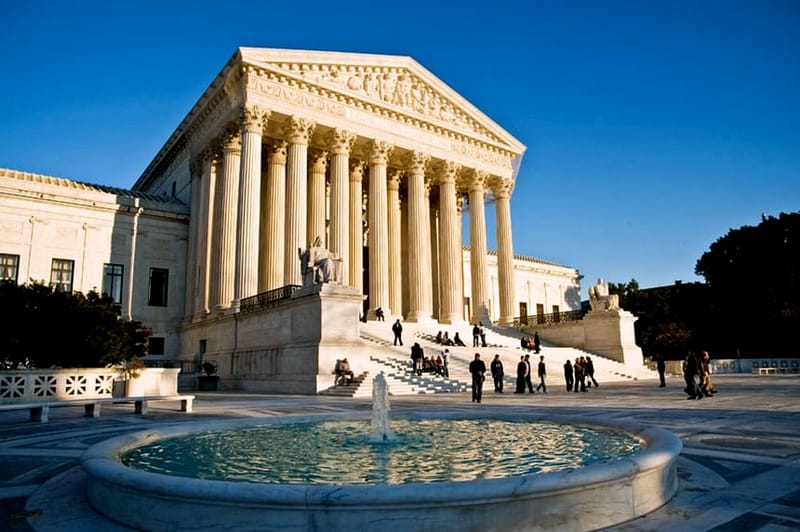Alcatraz 2.0? Trump’s plan faces same old problems: Water, sewage, and sharks
President Trump's call to reopen Alcatraz has reignited debate—but the same infrastructure issues that led to its closure in 1963 still loom large.
President Trump’s call this week to rebuild and reopen Alcatraz as a prison for “America’s most ruthless and violent Offenders” has stirred up fierce debate—but perhaps not for the reasons he expected. While the island evokes images of hardened criminals, dramatic escape attempts, and cinematic lore, the most immediate obstacles to Trump’s vision are far more mundane: water, sewage, and sharks.
Trump says he wants to rebuild and reopen Alcatraz to house “America’s most ruthless and violent Offenders.”
— California Today (@Ca_Today_Com) May 9, 2025
This AI-generated image imagines what that could look like.
Critics point out the same issues that shut it down in 1963—like water, sewage, and cost—still apply today. pic.twitter.com/NPGMgvadm7
“My reaction was two words: water and sewage,” said historian Jolene Babyak, whose father once worked as an administrator on the island.
“Those are two reasons why it would be impractical.”
The federal government shuttered Alcatraz in 1963 after just 29 years of use, citing operating costs that were nearly three times higher than other federal prisons.
According to the Federal Bureau of Prisons,
"This isolation meant that everything (food, supplies, water, fuel...) had to be brought to Alcatraz by boat. For example, the island had no source of fresh water, so nearly one million gallons of water had to be barged to the island each week. The Federal Government found that it was more cost-effective to build a new institution than to keep Alcatraz open."
At the time, the island lacked a freshwater source, requiring nearly one million gallons of water per week to be ferried in. Sewage, meanwhile, was simply dumped into the bay.
If the prison were to be reestablished today, those environmental and logistical challenges would likely grow exponentially—not to mention the modern permitting, environmental review, and compliance hurdles associated with rebuilding in a national park and sensitive marine ecosystem.
A Return to Harsh Symbolism
Trump’s proposal came via Truth Social on Sunday night, where he wrote:
“The reopening of ALCATRAZ will serve as a symbol of Law, Order, and JUSTICE.”
It was a callback to the prison’s original mission.
When Alcatraz opened in 1934, the goal was to “deal with the most incorrigible inmates in Federal prisons.” Criminals like Al Capone and George “Machine Gun” Kelly were housed there under a regime designed to isolate and control.
But while Alcatraz was once notorious for its strict conditions and cold isolation, its harshness didn’t necessarily deter crime—and, as Babyak pointed out in her NPR interview, the day-to-day experience on the island was more nuanced than its Hollywood portrayal.
“The food was excellent. Everybody bragged about it,” she said. “Many prisoners actually considered the living conditions … to be better than other Federal prisons.”
Sharks, Currents, and Cold Water—But Not Inescapable
Another myth Trump leaned on was that “no one ever successfully escaped from the prison.” That claim, however, is disputed.
Over its operational years, 36 men attempted escape in 14 separate incidents. Most were recaptured or killed, but in 1962, Frank Morris and brothers John and Clarence Anglin famously vanished. While the FBI concluded they likely drowned, their bodies were never found.


Source: Federal Bureau of Prisons.
An official investigation revealed an elaborate plan involving dummy heads, a raft made from raincoats, and homemade drills. Though unconfirmed, many experts believe the escapees could have survived the swim to the mainland, aided by favorable currents and tides.
Curiously, some news outlets have suggested that the Clint Eastwood film adaptation of the Morris Brothers' story, Escape from Alcatraz, may have served as motivation for Trump's surprise announcement to reopen the prison.
Whether or not there is merit to those claims, it is notably that multiple people have since completed the swim from Alcatraz Island to San Francisco, including fitness guru Jack LaLanne and even two 10-year-old children.
The real barrier wasn’t sharks—which, contrary to popular belief, are mostly small and bottom-feeding in San Francisco Bay—but rather “cold temperature … strong currents, and the distance to shore,” as one National Park Service summary noted.
Modern-Day Challenges
So why reopen Alcatraz now?
Trump has framed it as a symbolic return to toughness in criminal justice. But logistical challenges may prove more powerful than political messaging. In addition to environmental concerns, the site is currently managed by the National Park Service and attracts an average of 1.2 million tourists per year.
Reclaiming it for incarceration would require removing existing public access, retrofitting or demolishing historic buildings, and constructing a modern high-security facility—all in one of the most geologically and ecologically sensitive areas on the West Coast.
And then there’s the cost. If it was too expensive to operate in 1963, it’s unclear how much more a 21st-century version would demand—especially given that even today’s high-tech prisons have struggled with safety and staffing.
Conclusion: The Rock Remains Impractical
Trump’s dramatic call to bring back The Rock may resonate with certain voters, especially those who view it as a symbol of law and order. But the reality of turning a historic island-turned-tourist destination back into a prison is far more complicated—and likely far too costly.
As Jolene Babyak aptly put it, “...it would be impractical.”







